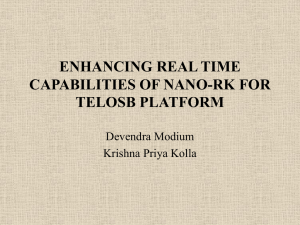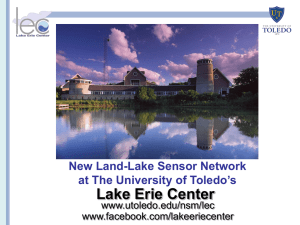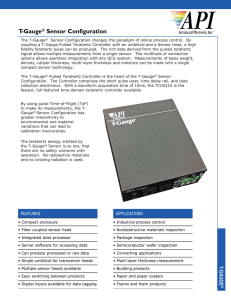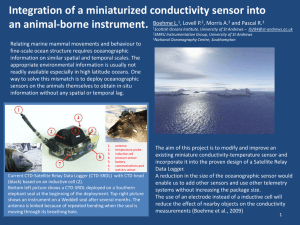Singh
advertisement
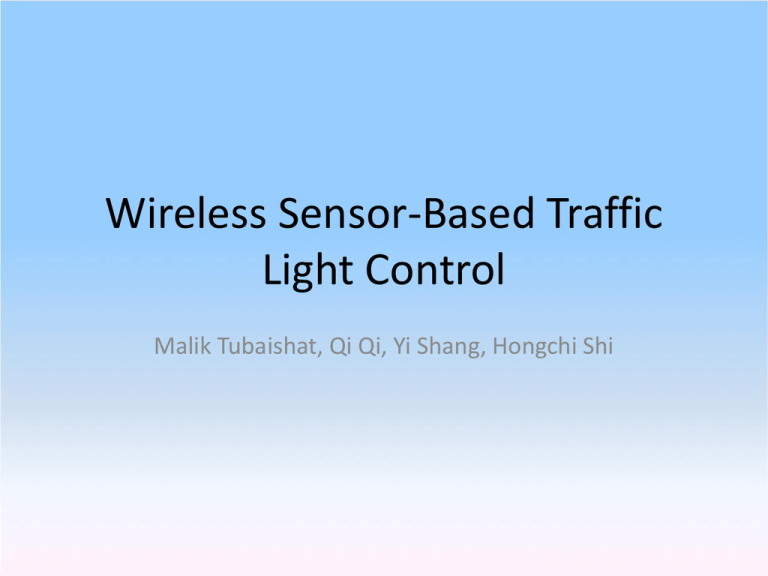
Wireless Sensor-Based Traffic Light Control Malik Tubaishat, Qi Qi, Yi Shang, Hongchi Shi Problem Statement • Comparison of performance of wireless sensor based networks(Single sensor and dual sensor) with fixed traffic cycle TLC. • Non-Occupancy Detection(NOD) and Occupancy Detection(OD) based comparision • Effect of sensor distance on Average waiting time. Results • Used GLD(Green Light District) for their simulation • Implemented Fixed Light controller, Single Sensor based and Fixed Sensor based • Some values: – Random Spawn Frequency : 0.1-0.35 – Cycle length 5000 averaged over 5 cycles. (a) urban-like map and (b) downtown-like map One Sensor- Urban Network One Sensor- Downtown Network Key take-aways • Two Sensor Model outperforms one Sensor Model • Two sensor model performance is close to best first which knows the exact number of waiting vehicles. • OD model, the closer the sensor to the junction the better the performance is. Sensor Placement in Real-Time Sensor Based Traffic Light Control • Infrastructure Based Controllers • Performance based Measurements • Control Decision through Sensor data Outline • Agent based Controllers – Learn the expected waiting times of vehicles and set the traffic lights accordingly • Infrastructure Based Controllers – Change the traffic flow based on the current flow of Traffic – They basically know the queue length and act on this information List of Controllers: • Random: Switched Traffic at Random • Most Cars: Move lanes regardless of the queue length • Best First: Give priority to lanes with maximum length • Longest Queue: Selects only the lane with maximum length • Relative Longest Queue: No. off road users is divided on the basis length of the lane to get relative rewards for traffic light settings Control Decision Through Sensor Data One Sensor Based Controller: • NOD-Non-Occupancy Based Detection • OD-Occupancy Based Detection • Two Sensor-based Controller • The Gain Value is the queue length for infrastructure-based TLC. • In every cycle the TLC adds the gain value for the possible sign configurations and selects the sign configuration with the maximum gain value Future Work • Focus work more towards increasing the life time of sensors • Study performance in realtime with smaller intervals. Reference • Wireless Sensor-Based Traffic Light Control, Malik Tubaishat, Qi Qi, Yi Shang, Hongchi Shi, Consumer Communications and Networking Conference, 2008. CCNC 2008. 5th IEEE Thank You -Questions...


